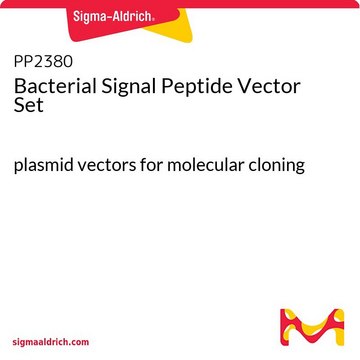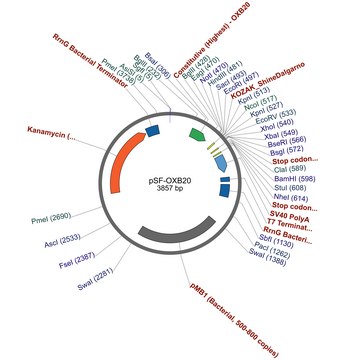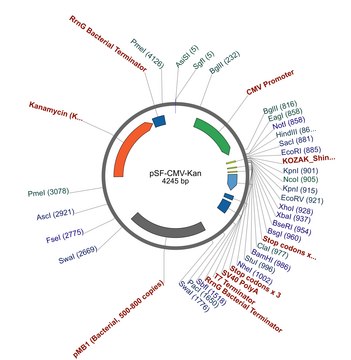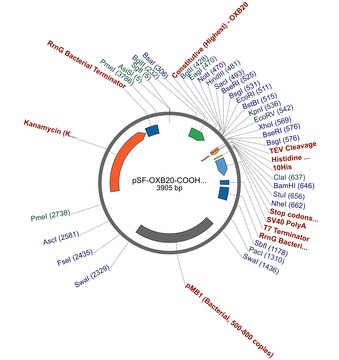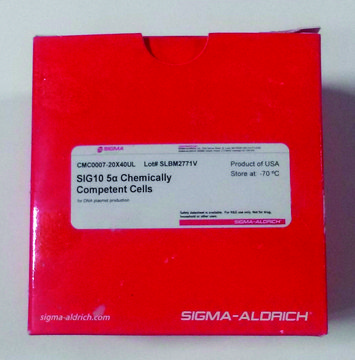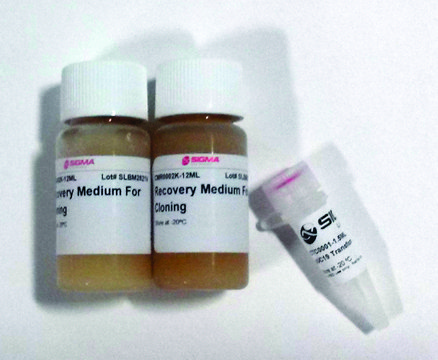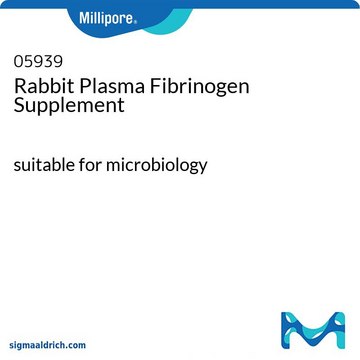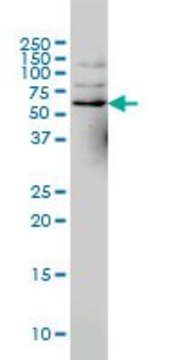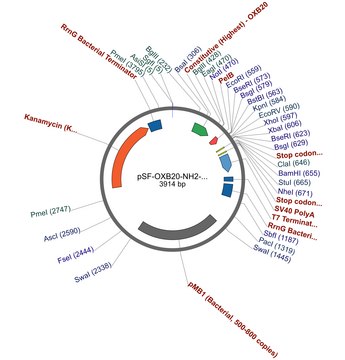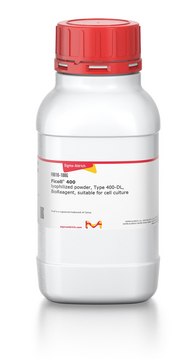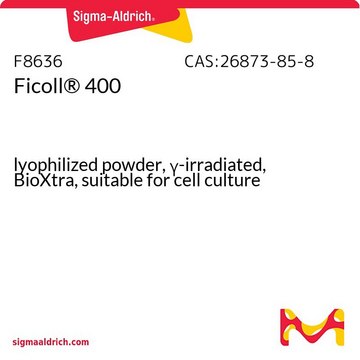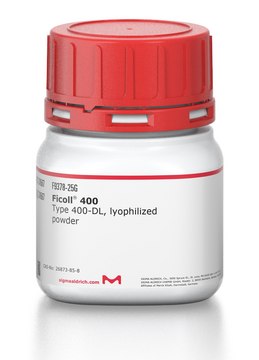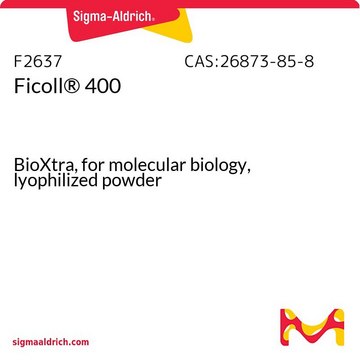OGS553
PSF-OXB1 - WEAK STRENGTH BACTERIAL PROMOTER PLASMID
plasmid vector for molecular cloning
别名:
cloning vector, expression vector, molecular cloning vector, plasmid, plasmid vector, snapfast vector, vector
选择尺寸
¥483.36
国内现货,预计发货时间2025年4月27日详情
选择尺寸
About This Item
¥483.36
国内现货,预计发货时间2025年4月27日详情
推荐产品
重组
expressed in E. coli
表单
buffered aqueous solution
分子量
size 3859 bp
菌种筛选
kanamycin
复制起点
pUC (500 copies)
肽切割
no cleavage
启动子
Promoter name: OXB1
Promoter activity: constitutive
Promoter type: bacterial
报告基因
none
运输
ambient
储存温度
−20°C
1 of 4
此商品 | F8636 | F9378 | F2637 |
|---|---|---|---|
| technique(s) cell culture | mammalian: suitable | technique(s) cell culture | mammalian: suitable | technique(s) - | technique(s) - |
| Quality Level 200 | Quality Level 200 | Quality Level 200 | Quality Level 200 |
| product line BioReagent | product line BioXtra | product line - | product line BioXtra |
| type Type 400-DL | type - | type Type 400-DL | type - |
organelle preparation, centrifugation gradients | organelle preparation, centrifugation gradients | - | - |
一般描述
Promoter Expression Level: This plasmid contains a weak constitutive E. coli promoter that was derived from the Arabinose operon. It is part of our constitutive bacterial promoter range. This promoter (OXB1) shows the lowest level of expression in the range with OXB20 showing the highest level of expression. They require no inducing agent for expression.
应用
Multiple cloning site notes: There are a few important sites within the MCS. These include the NcoI site the XbaI site and the BsgI and BseRI sites. The NcoI site contains a start codon that is immediately downstream of both a Kozak and Shine-Dalgarno ribosomal binding site. These allow for optimal positioning of genes when the start codon is placed in this location. If this is not required and you wish to use a downstream site for gene cloning you can remove the NcoI site by cleaving the plasmid with KpnI.
The XbaI site contains a stop codon. This stop codon is positioned in a specific position in relation to the BsgI and BseRI sites that are immediately downstream. When either BseRI or BsgI cleave the plasmid they produce a TA overhang from the stop codon in the XbaI site that is compatible with all of our peptide tag plasmids cut with the same sites. BseRI and BsgI sites are non-palindromic and cleave a defined number of bases away from their binding site.
Whenever we clone a gene into our multiple cloning site we always position the start and stop codon in the same positions in the MCS. If the start and ends of the genes are not compatible with NcoI and XbaI we extend the sequence to the nearest external sites but keep the start and stop codons locations consistent.
序列
分析说明
相关产品
储存分类代码
12 - Non Combustible Liquids
闪点(°F)
Not applicable
闪点(°C)
Not applicable
法规信息
商品
SnapFast™ plasmid system eliminates restriction sites in DNA sections, ensuring flexibility and functionality in molecular cloning..
Versatile sequencing primers enable sequencing of inserts in plasmids at specific positions, aiding in molecular biology research.
Plasmid platform with interchangeable DNA components offers versatile research tools for genetic studies.
我们的科学家团队拥有各种研究领域经验,包括生命科学、材料科学、化学合成、色谱、分析及许多其他领域.
联系客户支持